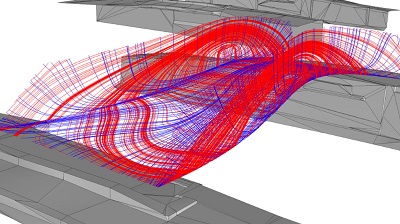 Tuesday, October 22, 2024
Tuesday, October 22, 2024  Tuesday, October 22, 2024
Tuesday, October 22, 2024 

In 2017, Dutch designer Joris Laarman will wheel a robot to the brink of a canal in Amsterdam. He’ll hit an “on” button. He’ll walk away. And when he comes back two months later, the Netherlands will have a new, one-of-a-kind bridge, 3-D printed in a steel arc over the waters. This isn’t some proof-of-concept, either: when it’s done, it will be as strong and as any other bridge. People will be able to walk back and forth over it for decades.
MX3D isn’t some high-tech concept; it actually works. In February 2014, Laarman showed off the MX3D system’s ability to 3-D print gravity-defying metal sculptures in mid-air. But printing out a bridge on location is a decidedly different challenge than 3-D printing something in a lab.
“We thought to ourselves: what is the most iconic thing we could print in public that would show off what our technology is capable of?” Laarman says in a phone interview. “This being the Netherlands, we decided a bridge over an old city canal was a pretty good choice. Not only is it good for publicity, but if MX3D can construct a bridge out of thin air, it can construct anything.”
The finished bridge will be around 24 feet long, support normal Amsterdam foot traffic, and feature a beautiful, intricate design that looks far more handcrafted than the detailing on most bridges. Because 3-D printing allows for a granular control of detail that industrial manufacturing does not, designs can be much more ornate, and almost bespoke in appearance.
Most 3-D printers use resin or plastic to construct objects. MX3D’s bridge will be made of a new steel composite that the University of Delft created. As strong as regular steel, it can be dolloped out by a 3-D printer, drop by drop. The result? A 3-D printed bridge as strong as any other, Laarman says.
